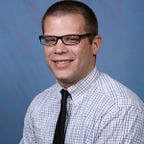Principles of Biomedical Science Taught by Ms. Harp
Written by Ydalia A. ‘27
The Project Lead The Way (PLTW) Biomedical sciences pathway isn’t commonly found in most Bay Area high schools. Usually, its a four-year program that introduces one course a year, but here at SJND, it’s different. 9th grade students take Principles of Biomedical science (PBS) in the second semester of their school year. The sophomores have to complete a year-long research project outside of class time. Juniors take AP Biology and HBS (Human Body Systems) and seniors take BI and either MI or AP Chemistry.
In total, there are four units to PBS that provide knowledge about biology, anatomy & physiology, genetics, microbiology, and epidemiology. The four units include Medical Investigation, Clinical care, Outbreaks & Emergencies, and Innovation.
Fun fact! Unit three is SJND science teacher’s Ms. Harp’s favorite unit, because her masters degree is in public health. She said, “It gives students the practical skills to know how to handle an outbreak or mass emergency situations.”
Ms. Harp says the PLTW biomedical sciences pathways helps in college. She said, “It gives students a taste of different career pathways.” She also said, “For students who want to study biology, chemistry, anatomy etc in college, this will give them a leg up.”
Ms. Harp finds that a lot of students go into her class wanting to be doctors but they find that careers in forensic science, nursing, or a field that is non-science is more suited for them.
Let’s learn more about the teacher of PBS, HBS, & AP Biology.
Ms. Katie Harp is a valued and loved teacher at SJND, and it is her second time teaching PBS. She says her favorite part of teaching PBS is “teaching the freshmen and sparking their love for the sciences.”
I asked what led her to teaching biomedical sciences and she answered, “I originally wanted to be a doctor and even spent a year in medical school but life happens and I found my way to teaching and with my degrees and experience in biomedical sciences. It was just the perfect fit to teach in this pathway.”
Ms. Harp also said she would have opted to becoming a forensic scientist if she hadn’t become a teacher. She said, “I think forensic sciences is super cool. If I hadn’t gone into teaching after medical school, I think becoming a forensic scientist would have been awesome. I am obsessed with true crime and think that I could totally solve some cold cases if I had the chance.”
